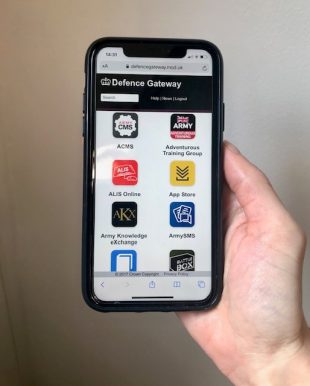“That sounds really interesting,” replied the man in the gym insincerely. “I’m not sure it applies to me though.”
“Do you have an Excel spreadsheet that’s critical to the output of your team? Do you understand how it was made or how to recreate it if it got deleted or corrupted? Do you manually input the data into it?” I responded.
“Yes. No, not a clue. Yes, it takes me ages,” he said.
“You do need me then!”
Sadly, this is the experience of military and MOD Civil Service Business Analysts working within Army HQ. And I would suggest the pattern is repeated across the other parts of Defence. One challenge is that busy people, doing busy jobs, who don’t consider themselves ‘technical’, don’t want to risk the disruption of learning to do something differently. Another is they don’t know what resources are available that can make their life easier.
A journey of a thousand miles begins with a single step or a giant leap
Defence Digital launched in December 2019, bringing together new and existing teams under the MOD Chief Information Officer. This recognised the unique role of digital in helping to drive integrated military effect in the future. However, it’s not all ‘jam tomorrow’, there is significant benefit to be gained now. This includes applications such as CHURCHILL, MUSTER and MARSHAL developed by the Field Army Information Exploitation (IX) Programme and the Army’s software house (Information Application Services), part of Army HQ Information Directorate. This suite of applications will soon deliver a digitised single tasking mechanism, combined scheduler and digital management of people and resources. It will also provide soldiers with access to pay, career, training and event information direct to their mobile device through the MySeries applications.

Equally the Army Data sub-strategy, led by the Army’s Chief Data Officer, is seeking to change the widespread culture of manually inputting critical data into Excel spreadsheets. There is a better way. This includes valuing our data, educating employees (Military and Civil Servant) about the risks of current working practices, what they should do, and their benefits. And note I’m not suggesting a step that includes ‘directing’ staff to do it. Experience has taught the team that the only way to generate genuine cultural change is to demonstrate the value and rewards to the lowest level. This self-recognition of the benefits then drives positive behaviour and practices. In short, people change their own behaviour and self-police, out of self-interest if nothing else.
What’s next for the Army’s Digital Transformation?
One of the most successful cultural change campaigns in the UK was the drink driving campaigns by the central Government communications team. It reduced drink driving related deaths by 90%. But it took fifty years to fundamentally change the nation’s driving and drinking culture. So, we need to look at the means to educate and inform now.
In March, Army HQ is hosting an Enabling transformation symposium. This will showcase applications and analytics capabilities that are providing benefits now to busy staff, regimental officers and soldiers. It will also provide evidence of ‘Jam today’ for busy people who need to spend some time learning in the short term how to save themselves a lot of time in the medium to long term.
5 comments
Comment by Naomi Heming posted on
Is the Enabling Transformation symposium referenced in the above article an internal Army event or public?
Comment by Rebecca Carden posted on
Hi Naomi. This was a planned internal event. Following government measures announced this week, the Symposium has been postponed.
Comment by Bethan posted on
Hi, where can we get in touch with those running the Army data sub-strategy to discuss getting help with a Defence area that could be streamlined with a little technical support? Thanks.
Comment by Rebecca Carden posted on
Thank you for your interest. The Army's data sub-strategy is run by Brigadier Michael Dooley, the Army's Chief Data Officer.
Comment by caleb posted on
nice